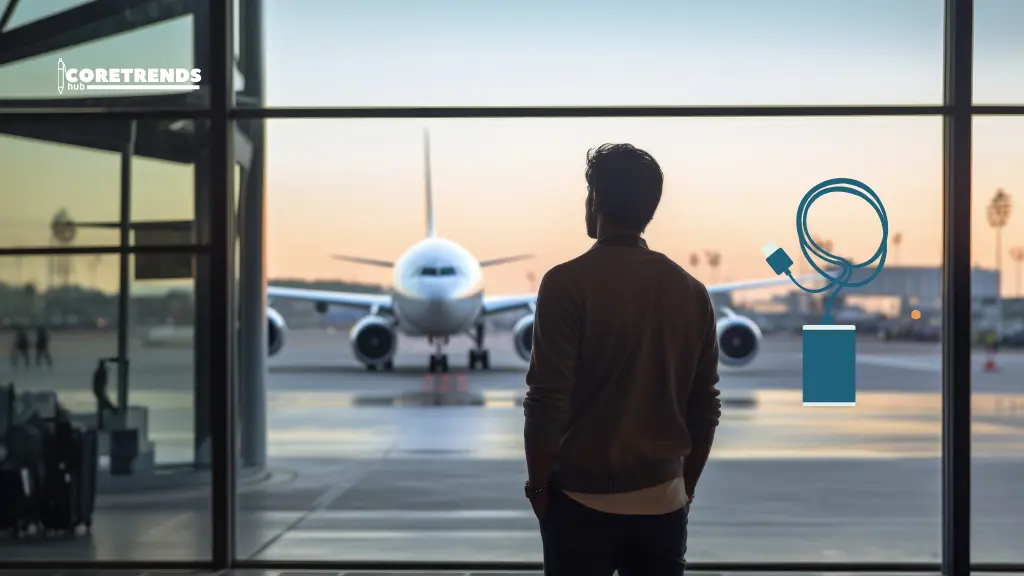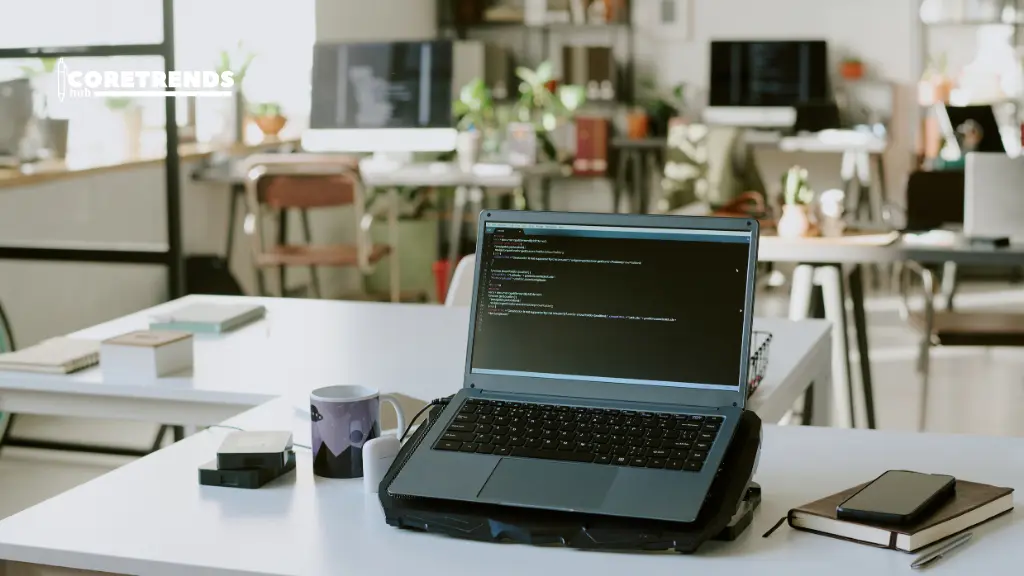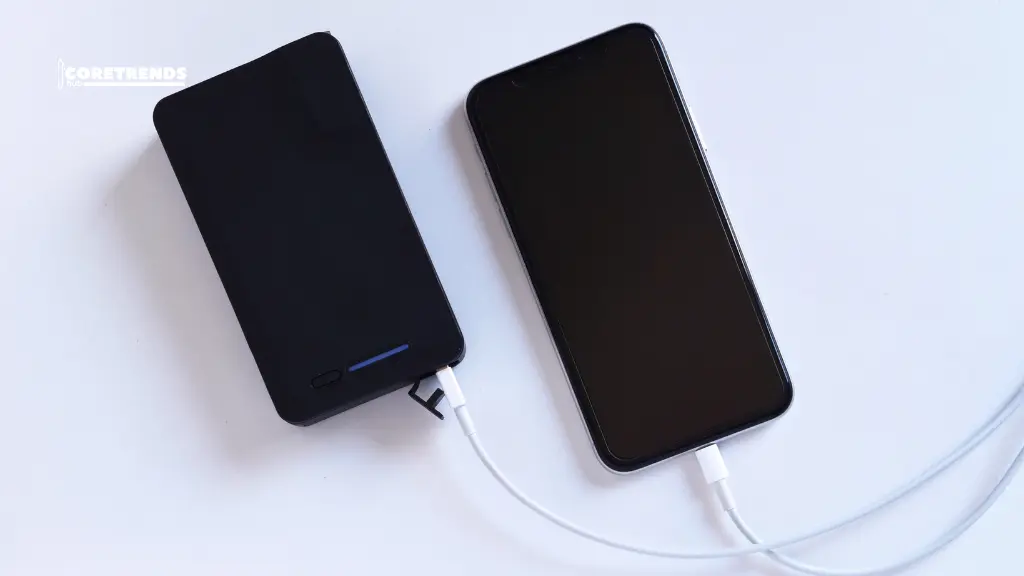Traveling with a portable charger matters because our devices run out of battery quickly. Phones, tablets, and other gadgets are essential for navigation, communication, and entertainment while traveling. Having a power bank ensures your devices stay charged during long flights, layovers, or delays. It also helps in emergencies when you need your phone for calls or important notifications.
Airlines and the TSA have clear rules about carrying power banks on planes. Portable chargers are usually allowed in carry-on bags, not in checked luggage. There are limits on battery size, measured in watt-hours (Wh), and larger batteries may need airline approval. Understanding these rules before your trip helps avoid problems at security.
Table of Contents
TSA Rules for Portable Chargers
Carry-On Bag Requirement
Portable chargers are allowed on planes, but only in carry-on bags. They are not permitted in checked luggage because lithium batteries can catch fire if damaged. Keeping your power bank in your carry-on ensures it stays accessible and safe during your flight.
Battery Size Limits
There are limits on battery size, measured in watt-hours (Wh). Chargers under 100 Wh are generally allowed without special approval. Those between 100 Wh and 160 Wh may need approval from the airline. Chargers above 160 Wh are usually not allowed on commercial flights.
Safety Precautions
The TSA recommends protecting your charger from short circuits. Keep it in a case or cover the terminals. Do not carry damaged or swollen batteries, as they can be dangerous during the flight.
Check Airline Policies
Some airlines have extra rules beyond TSA guidelines. Always check your airline’s website before traveling to avoid issues at security. Following these rules helps ensure safe and smooth travel.
Airlines’ Policies on Power Banks
Differences Between Airlines
Airlines have their own rules for carrying power banks, and these can vary widely. Some may allow higher-capacity chargers, while others have stricter limits. It’s important to check your airline’s policy before traveling to avoid any issues at the airport.
Checking Airline Websites Before Travel
The best way to confirm rules is by visiting the airline’s official website. Look for sections on baggage or prohibited items, where power bank policies are usually listed. Checking in advance helps prevent delays, confiscation of your charger, or extra fees.
Approval for High-Capacity Chargers
Some airlines require special approval for chargers between 100 Wh and 160 Wh. Chargers above 160 Wh are often not allowed, even with approval. Contact the airline ahead of time if you plan to carry a larger power bank to ensure compliance.
Capacity Limits and Watt-Hour Guidelines
Watt-hours (Wh) measure the energy capacity of a power bank. It tells you how much charge the battery can hold and how long it can power your devices. Airlines and the TSA use Wh to set rules for what chargers are allowed on planes.
Maximum Allowed Capacity on Planes
Most airlines allow power banks with a capacity of up to 100 Wh without special approval. Chargers between 100 Wh and 160 Wh may need airline approval before you travel. Anything above 160 Wh is generally not allowed on commercial flights for safety reasons.
Special Approval for High-Capacity Chargers
If your charger falls in the 100–160 Wh range, contact your airline in advance. They can guide you on the proper steps for approval and how to carry it safely. Following these rules helps avoid issues at security and ensures safe travel.
Carry-On vs. Checked Luggage Rules
Portable chargers should always be carried in your carry-on bag. Carrying them in the cabin allows security personnel to inspect them if needed. It also reduces the risk of fire hazards and keeps your charger accessible during long flights or layovers.
Most airlines do not allow power banks in checked luggage. Lithium batteries can overheat or catch fire if they are damaged in the cargo hold. Checked bags are also harder to access in case of emergencies, which makes carrying chargers in your carry-on much safer.
Packing your charger properly is important. Keep it in a protective case or cover the terminals to prevent short circuits. Place it in an easily reachable pocket of your carry-on so you can access it when needed.
Common Mistakes to Avoid
- Not Checking Airline or TSA Rules: One common mistake travelers make is forgetting airline or TSA rules. Some assume all chargers are allowed, but airlines have strict limits on battery capacity. Not checking these rules can lead to your power bank being confiscated at security.
- Carrying Chargers in Checked Luggage: Another mistake is placing chargers in checked luggage. Lithium batteries can overheat or catch fire if damaged, so keeping them in checked bags is unsafe. Always pack your power bank in your carry-on bag.
- Exceeding Watt-Hour Limits: Exceeding the watt-hour limit is a frequent issue. Chargers above 160 Wh are usually not allowed, and those between 100–160 Wh may need airline approval. Ignoring these limits can cause problems at the airport.
- Improper Packing: Travelers sometimes pack chargers improperly. Leaving them unprotected or in a crowded bag increases the risk of damage or short circuits. Using a case and keeping the charger accessible helps prevent accidents and makes security checks smoother.
- Charging During the Flight: Some travelers try charging their power bank on the plane, which is unsafe and often not allowed. Charging can cause overheating or trigger fire alarms. It’s best to fully charge your devices before boarding and avoid using the power bank during the flight.
Tips for Traveling with a Portable Charger
- Always carry your power bank in your carry-on bag. It stays accessible and can be inspected by security. Avoid putting it in checked luggage.
- Use a protective case or cover the terminals to prevent short circuits and reduce the risk of damage.
- Check the watt-hour (Wh) rating. Chargers under 100 Wh are usually fine, 100–160 Wh may need airline approval, and above 160 Wh are generally not allowed.
- Place the charger in an easy-to-reach pocket of your carry-on. This helps during layovers, delays, and security checks.
- Make sure your power bank is fully charged before boarding. Avoid charging it during the flight to prevent overheating.
- Clearly mark the Wh on your charger if possible. It speeds up security checks and avoids confusion at the airport.
Conclusion
Traveling with a portable charger is very useful. It keeps your devices powered during flights, layovers, or delays. Knowing the rules helps you avoid problems at the airport. Always check the battery size and airline policies before you travel.
Power banks should be carried in carry-on bags, not in checked luggage. Protect them from damage and follow TSA guidelines. Avoid exceeding the watt-hour limits and keep them accessible. By following these rules, you can travel safely with your charger.



